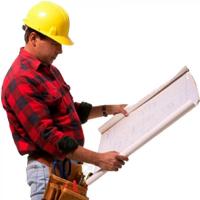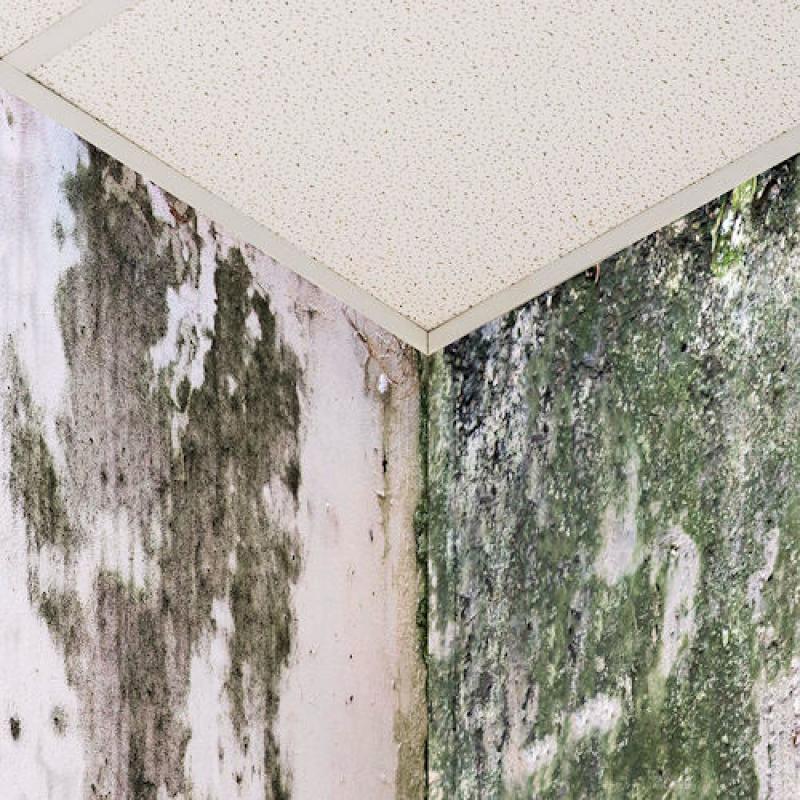12 Steps for Household Mold Removal
by Guest Post on Aug 16, 2011
Elevated levels of indoor household mold growth are very unhealthy for both homeowners and renters. Here are 12 steps for safe and effective, do-it-yourself household mold removal in houses, condominiums, and apartments.
1. Locate, fix and prevent all sources of mold growing water problems,
such as severe winter-caused roof ice dams and broken, frozen water pipes, plus leaky roofs or siding, recurring flooding, plumbing leaks, air conditioning condensation, and high humidity (e.g., above 70%), especially for homes in communities near the ocean, a lake, or a large river.
2. Find all visible mold growth
by thorough, visual mold inspection. Use a strong flashlight and your sense of smell to help locate mold growth.
3. Inspect for hidden mold growth
inside, above, below, and next to water-damaged ceilings, walls, and floors, as well as inside heating, ventilating, and air conditioning (HVAC) equipment and air ducts. Cut one inch by one inch or bigger core dry wall samples. Remove and look in the middle and back of each core for visible mold growth. Then, use a flashlight to look inside each hole for mold growth. You can also use a low-cost, three-foot to six-foot long fiber optics inspection cable to look in all directions inside each inspection hole.You may suspect hidden mold if a building smells moldy, but you cannot see the source, or if you know there has been water damage and residents are reporting health problems. Mold may be hidden in places such as the back side of dry wall, wallpaper, or paneling, the top side of ceiling tiles, the underside of carpets and pads, etc. Other possible locations of hidden mold include areas inside walls around pipes (with leaking or condensing pipes), the surface of walls behind furniture (where condensation forms), inside ductwork, and in roof materials above ceiling tiles (due to roof leaks or insufficient insulation)," advises the U.S. Environmental Protection Agency.
4. Use do-it-yourself mold test kits
to test room air and the outward air flow from each HVAC air duct register and all window air conditioners for the possible presence of elevated levels of airborne mold spores. If there are serious mold problems anywhere in a home, airborne mold spores from those mold infestations will enter into the HVAC to mold cross contaminate both the HVAC and the entire house through the mold spore-carrying, outward air flow from the air duct registers. Mold lab analysis of the mold test kit samplings documents the types of mold species and the mold spore count severity of room and HVAC mold infestation.
5. When doing mold inspection, testing, and removal, wear proper personal protection
including at least: (a) N-95 breathing mask; (b) disposable vinyl gloves; (c) eye goggles with no air holes; (d) head covering; and (e) washable or paper disposable coveralls. These items are readily available at large paint, hardware, and home improvement stores.
6. Contain the mold work area
to keep airborne mold spores from cross-contaminating the rest of the house. Tape or staple wall-to-wall, floor-to-ceiling, clear plastic sheeting as mold containment walls, with a lift up plastic sheeting flap door for easy entry and exit.
Dry the work area (especially if still wet from flooding or a now-fixed plumbing or roof leak) with one or more dehumidifiers and/or large fans located right in front of open windows to dry the area and to exhaust dangerous airborne mold spores to the outdoors.
7. Remove visible mold growth
by scrubbing it off with a hard bristle brush or wire brush dripping with boric acid powder (mix two cups per gallon of warm water). You can also use a wire brush attachment for an electric drill, hand sander, electric sander, hand-held planer, and power planer to remove mold growth from building materials.
8. If you cannot remove all of the mold growth
to a visibly mold-free condition, then remove, discard, and replace the moldy building materials
9. Don’t use chlorine bleach
because it is not an effective or long-lasting killer of toxic mold growth and mold spores on and inside porous, cellulose building materials such as wood timbers, drywall, plasterboard, particleboard, plywood, plywood substitutes, ceiling tiles, and carpeting/padding. In addition, bleach treatment does not prevent future mold growth.
10. If you have mold growth inside your HVAC system
If you have mold growth inside your HVAC system, first have your equipment and air ducts professionally cleaned, and then use a fogging machine to fog boric acid powder (two cups per gallon of warm water) for one hour into the fresh air entry duct of your HVAC to kill any remaining mold and to coat the insides of your equipment and ducts with mold-preventative boric acid crystals (left inside after natural drying). Do this procedure while the system is running on fan ventilation (no heating or cooling) to deliver substantial amounts of boric acid powder throughout the HVAC.
11. During the mold removal proces
, the residents should move temporarily to a mold-safe place until the successful completion of the mold remediation project and until clearance mold testing documents that it is safe to return. Residents moving out should not take any clothing, personal possessions, furnishings, furniture, or equipment until such items have been effectively mold decontaminated outdoors (or in a “clean room” built from plastic sheeting) to avoid mold cross contamination of the temporary or new residence.
Popular Articles
Three Places to Spend Money on the Exterior of Your Home
When you have the exterior of your home remodeled, you are investing, time, energy and convenience into the project and you want to make sure that...
101084 Views
Homemade Headboards-Make an Upholstered or Wooden Headboard
Homemade headboards can add a lot of personality to any bedroom. They can be coordinated with existing furniture and room decor or they can be the...
76656 Views
When to Use a Brush, Roller or Sponge Brush
Brushes are a good choice for painting trim and woodwork. They are also useful for cutting in the edges around the top and bottom edges and corners...
72581 Views
Creating a Cottage Kitchen with Bead Board
Kitchen decor can range from modern and bold to elegant and elaborate by using strategic kitchen pieces. One of the most popular decorating trends...
55087 Views
Gas Fireplace Diagnostics and Troubleshooting
Follow these steps for diagnosing and troubleshooting Gas Fireplaces repairs. For the average DIYer, this may seem intimidating, depending on the...
32193 Views
Latest Articles
How Much Does it Cost to Take a Bath?
Plumbers know that a bath may seem like a relaxing luxury, but the real cost extends far beyond your water bill. The average soak uses 35 to 50...
on Apr 8, 2025
10 Concrete Patio Ideas on a Budget
A concrete patio can be a game-changer for your outdoor space. It is durable, versatile, and can be customized to fit your style. But what if you...
on Mar 25, 2025
Tips for Creating a Stunning Personalized Photo on Canvas
Order the unique beauty of a personalized photo on canvas and bring your memories to life. With a customized photo on canvas, you can transform...
on Mar 7, 2025
Best Areas to Buy Property in Singapore for Long-Term Growth
Singapore's real estate market remains one of the most stable and lucrative in the world. With limited land supply, strong governmental...
on Feb 18, 2025
Troubleshooting Excess Water in Your HVAC Secondary Condensate Drain Pan
When maintaining your air conditioning system, it is easy to overlook the condensate drain pan - until excess water starts pooling in places where...
on Jan 12, 2025
Featured Articles
What Type of Licensed Contractor Should You Hire?
on Feb 28, 2017
Hire Contractors / Estimates

Looking for a specialty project? There are many types of contractors available for your home improvement needs. Finding the right type of...
Sponsored Articles
Best Areas to Buy Property in Singapore for Long-Term Growth
on Feb 18, 2025
Real Estate / Finance

Singapore's real estate market remains one of the most stable and lucrative in the world. With limited land supply, strong governmental...
Actions
Top Categories
- Garden / Landscaping / Patio — 264
- Kitchen / Bathrooms — 240
- Real Estate / Finance — 203
- Appliance / Repair — 186
- Interior Design / Decor — 184
- HVAC / Air Conditioning — 148
- Cleaning / Maintenance — 144
- Improvements / Remodeling — 131
- Plumbing / Basements — 118
- Floors / Tile / Hardwood — 116
- Doors / Garages — 113
- Safety / Security — 113
Articles Archive
More DIY Articles
How to Organize Your Garage for Optimal Storage
The garage is often a dumping ground. It is the place we store everything that does not have a home elsewhere. A list of items deposited in a...
5 Ways Hiring a Plumbing Service Can Benefit You
Living in a home with your loving family is one of the best things you can experience in your life. But as you live, your home will need...
6 Dangers of Not Receiving Needed House Foundation Repairs
Most of us have heard horror stories about foundation problems and the possibilities of the damage that your home can entail. It is no surprise...
Eco-Friendly Building Materials to Consider Before You Remodel
Are you thinking about remodeling your home but concerned about your potentially large carbon footprint? Of course, you'll want to make your house...
DIY Plumbing - Can You Do It?
A home may be where the heart is. It is also a heartland of numerous plumbed pipes, connections, valves, and couplings. There are some areas of the...

